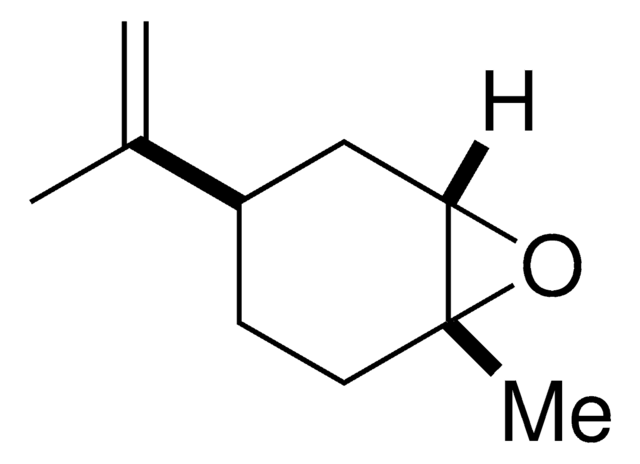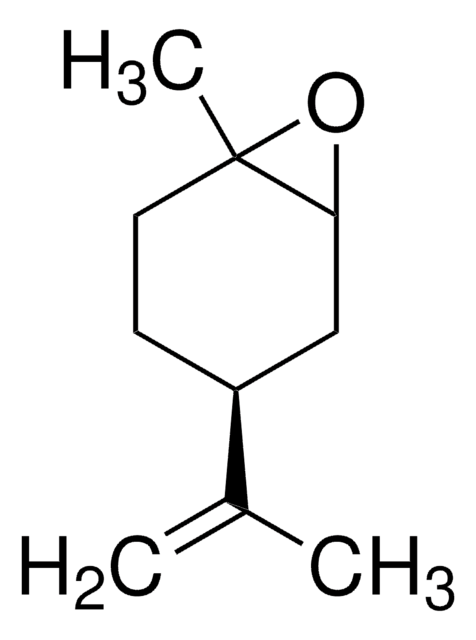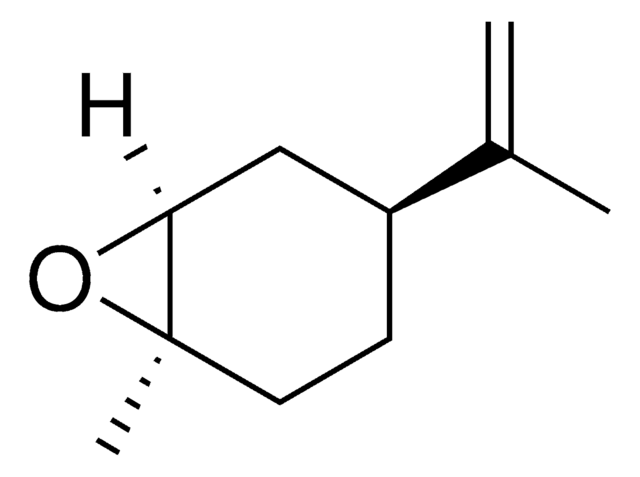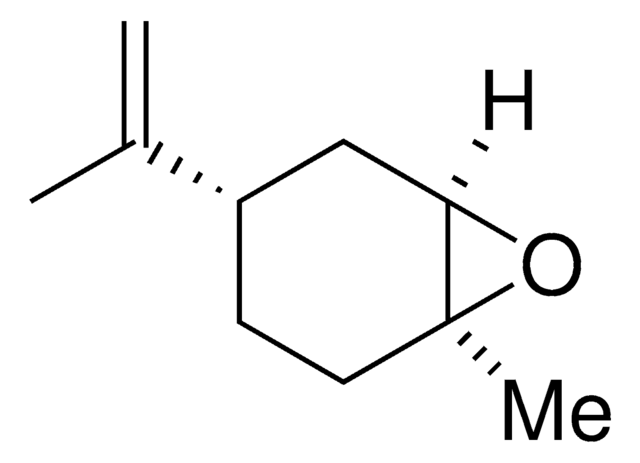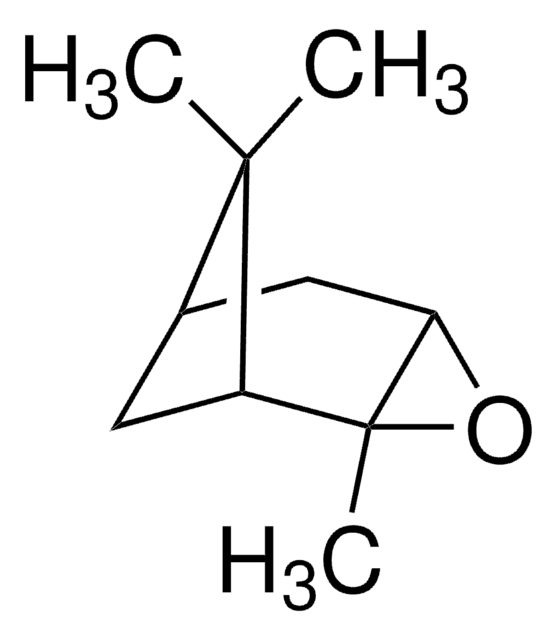921459
trans-(+)-limonene oxide
Synonym(s):
(1S,4R,6R)-4-Isopropenyl-1-methyl-7-oxabicyclo[4.1.0]heptane
Sign Into View Organizational & Contract Pricing
All Photos(1)
About This Item
Empirical Formula (Hill Notation):
C10H16O
CAS Number:
Molecular Weight:
152.23
MDL number:
UNSPSC Code:
12352212
Recommended Products
form
liquid
Quality Level
InChI
1S/C10H16O/c1-7(2)8-4-5-10(3)9(6-8)11-10/h8-9H,1,4-6H2,2-3H3/t8-,9-,10+/m1/s1
InChI key
CCEFMUBVSUDRLG-BBBLOLIVSA-N
Application
trans-(+)-Limonene oxide is a valuable chiral terpene oxide building block. Used in the synthesis of Phosphorus Incorporation (PI) reagents, as a biologically sourced component of polycarbonate polymers, and as a building block for synthetic applications requiring a reactive epoxide or alkene.
Related product
Product No.
Description
Pricing
Storage Class
10 - Combustible liquids
wgk_germany
WGK 3
flash_point_f
149.0 °F - closed cup
flash_point_c
65 °C - closed cup
Certificates of Analysis (COA)
Search for Certificates of Analysis (COA) by entering the products Lot/Batch Number. Lot and Batch Numbers can be found on a product’s label following the words ‘Lot’ or ‘Batch’.
Already Own This Product?
Find documentation for the products that you have recently purchased in the Document Library.
Ke-Yin Ye et al.
Journal of the American Chemical Society, 141(24), 9548-9554 (2019-06-11)
Organic radicals are generally short-lived intermediates with exceptionally high reactivity. Strategically, achieving synthetically useful transformations mediated by organic radicals requires both efficient initiation and selective termination events. Here, we report a new catalytic strategy, namely, bimetallic radical redox-relay, in the
Samantha A Green et al.
Journal of the American Chemical Society, 141(19), 7709-7714 (2019-04-30)
Metal-hydride hydrogen atom transfer (MHAT) functionalizes alkenes with predictable branched (Markovnikov) selectivity. The breadth of these transformations has been confined to π-radical traps; no sp3 electrophiles have been reported. Here we describe a Mn/Ni dual catalytic system that hydroalkylates unactivated
Julian C Lo et al.
Journal of the American Chemical Society, 139(6), 2484-2503 (2017-01-18)
This Article details the development of the iron-catalyzed conversion of olefins to radicals and their subsequent use in the construction of C-C bonds. Optimization of a reductive diene cyclization led to the development of an intermolecular cross-coupling of electronically-differentiated donor
Our team of scientists has experience in all areas of research including Life Science, Material Science, Chemical Synthesis, Chromatography, Analytical and many others.
Contact Technical Service
